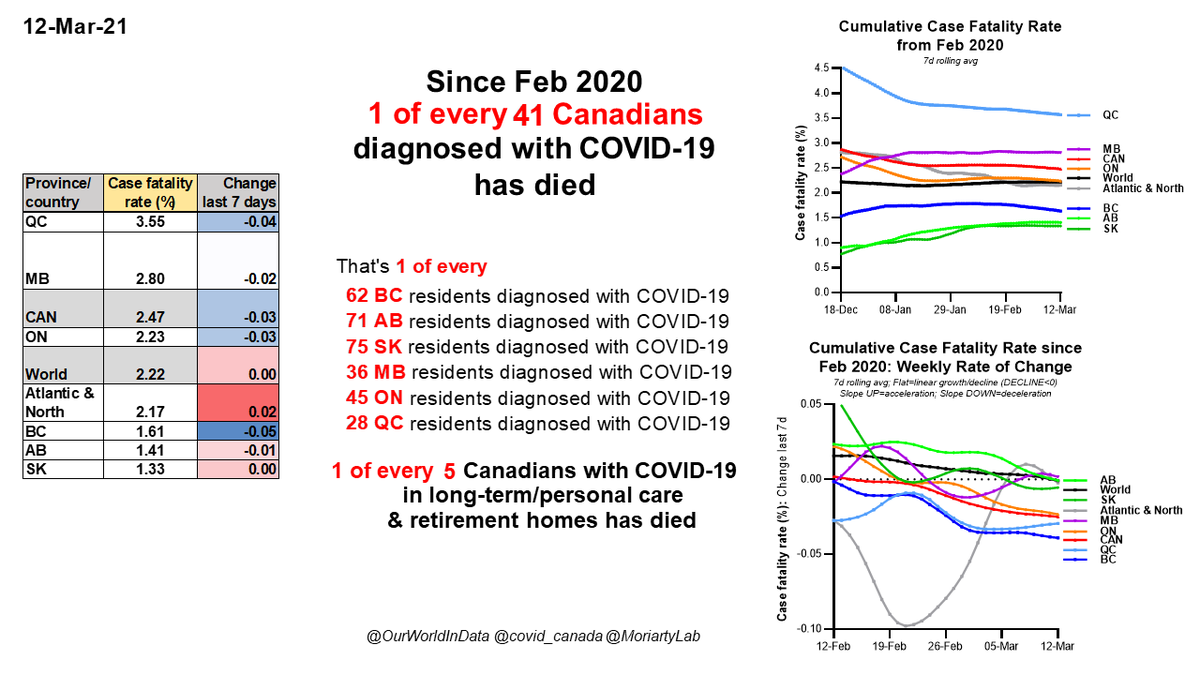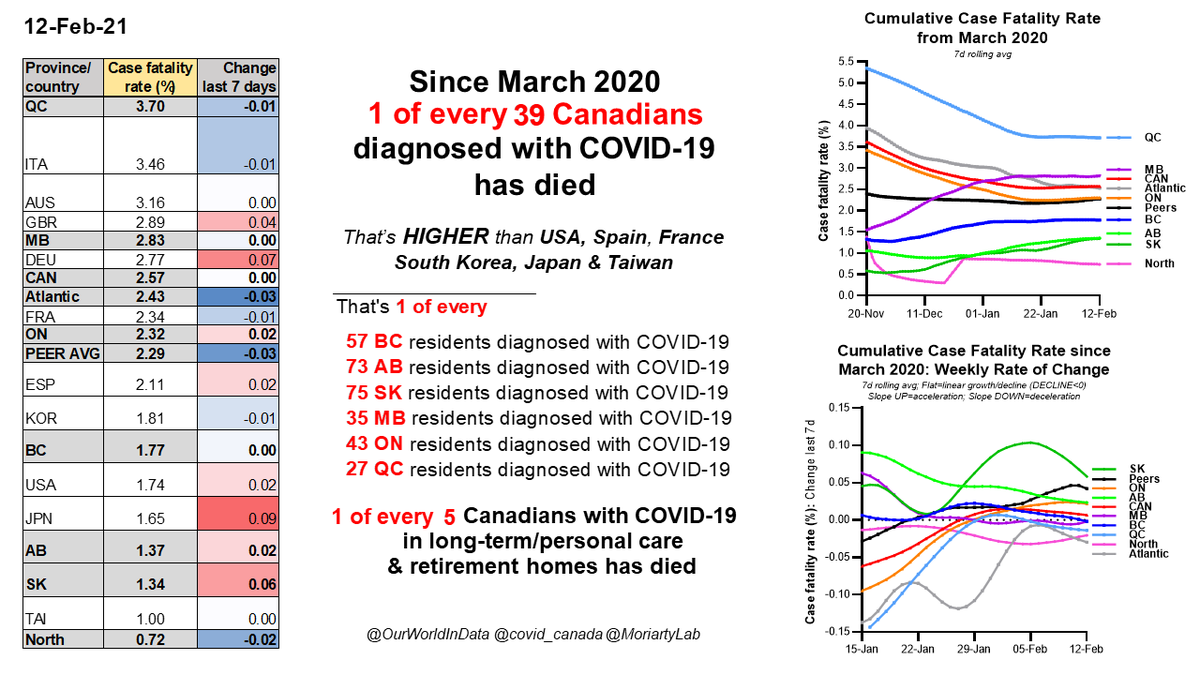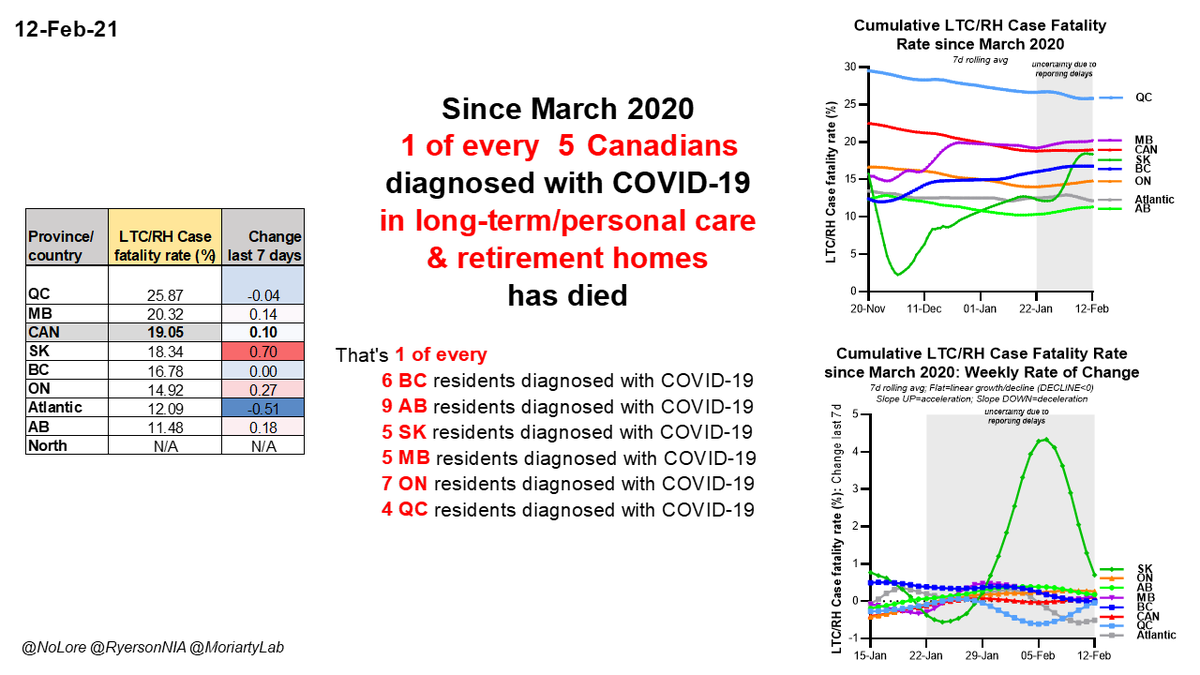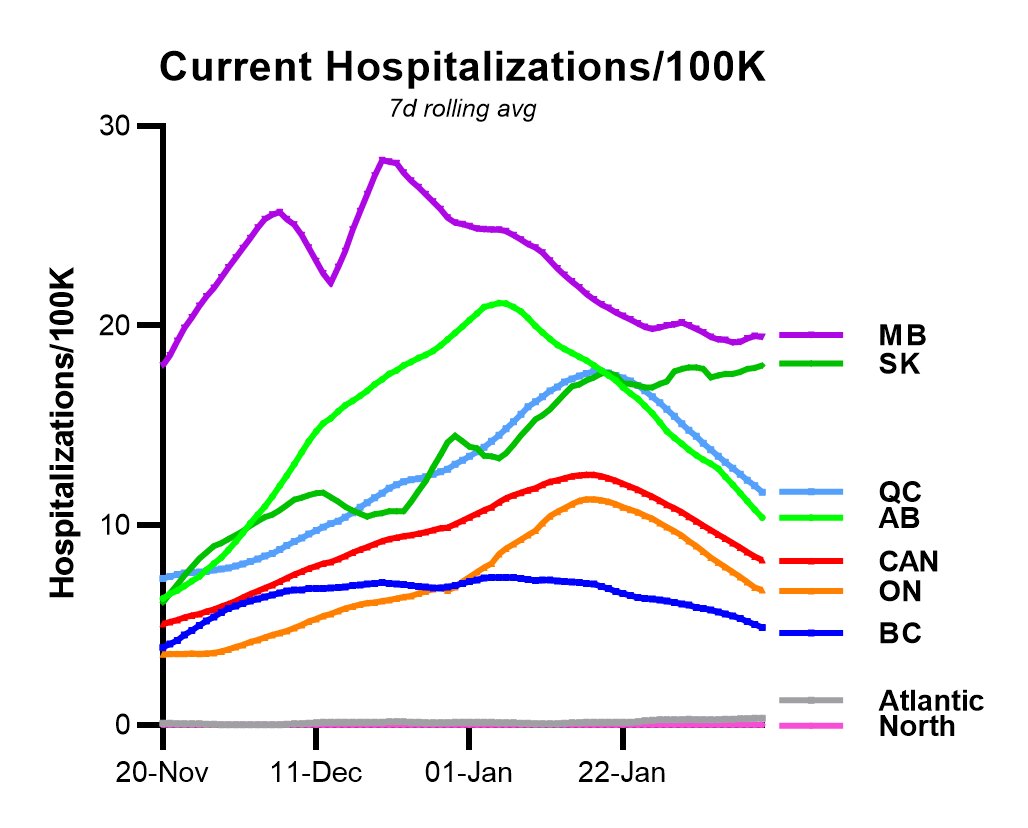
Mar 12
Excess deaths/100K in #Canadians 45+ years old
(fold difference compared to Atlantic & Northern Canadians)
-from 1st week province reached 1 reported #COVID19 death/million people
-to Nov 14, 2020 (latest date of full excess mortality reporting in all provinces)
Excess deaths/100K in #Canadians 45+ years old
(fold difference compared to Atlantic & Northern Canadians)
-from 1st week province reached 1 reported #COVID19 death/million people
-to Nov 14, 2020 (latest date of full excess mortality reporting in all provinces)

Excess deaths/100K in #Canadians (all ages, and 45+ years) compared to reported #COVID19 deaths
-from 1st week province reached 1 reported #COVID19 death/million people
-to Nov 14, 2020 (latest date of full excess mortality reporting in all provinces)
-from 1st week province reached 1 reported #COVID19 death/million people
-to Nov 14, 2020 (latest date of full excess mortality reporting in all provinces)

Total excess deaths in #Canadians (all ages, and 45+ years) compared to reported #COVID19 deaths
-from 1st week province reached 1 reported #COVID19 death/million people
-to Nov 14, 2020 (latest date of full excess mortality reporting in all provinces)
-from 1st week province reached 1 reported #COVID19 death/million people
-to Nov 14, 2020 (latest date of full excess mortality reporting in all provinces)

By suggestion of @picardonhealth a short explainer on estimates of excess death/mortality.
First, these data come from @StatCan_eng:
Table 13-10-0784-01 Adjusted number of deaths, expected number of deaths and estimates of excess mortality, by week
doi.org/10.25318/13100…
First, these data come from @StatCan_eng:
Table 13-10-0784-01 Adjusted number of deaths, expected number of deaths and estimates of excess mortality, by week
doi.org/10.25318/13100…
Estimates of excess mortality/deaths take the number of OBSERVED DEATHS from any cause reported in a given period (for example, during the #COVID19 epidemic), and compare these numbers to EXPECTED DEATHS for the same period.
The expected deaths from Mar-Nov 2020 (the period covered in the analyses I've shown) is the average number of deaths from all causes that occurred during this period from 2015-2019. This gives an average baseline of how many deaths we'd normally expect from Mar-Nov.
Estimated excess mortality is calculated by subtracting average number of deaths for the period of interest over the previous 5 years from the number of deaths that actually occurred in that period.
Excess deaths = (Mar-Nov 2020 deaths) - (avg Mar-Nov deaths from 2015-2019)
Excess deaths = (Mar-Nov 2020 deaths) - (avg Mar-Nov deaths from 2015-2019)
In plain language, excess death is how many more people died in a given period than you expected to die, based on previous years.
Baseline/expected deaths include deaths due to all the "normal" causes of death. The excess death is on top of that and is due to something new.
The numbers I've provided are just that, the number of "extra" deaths that occurred from Mar-Nov 2020, after the arrival of #COVID19.
The numbers I've provided are just that, the number of "extra" deaths that occurred from Mar-Nov 2020, after the arrival of #COVID19.
Please let me know if I can help clarify anything! As a scientist I'm not always very good at explaining things clearly, so tell me if this is as clear as mud to you!
Finally, something else I should have explained is why to focus on excess deaths in people 45 years and older. This is to try to focus as much as possible on adults most likely to die from #COVID19 AND to reduce confounding from excess deaths due to accidental opioid overdose.
The accidental opioid poisoning epidemic in Canada has been worsening during the COVID-19 epidemic. Most opioid deaths occur in people aged 20-49. The StatsCan excess death age boundary for people in their 40s is 45, so that's why I'm looking at ages 45+y.
• • •
Missing some Tweet in this thread? You can try to
force a refresh














